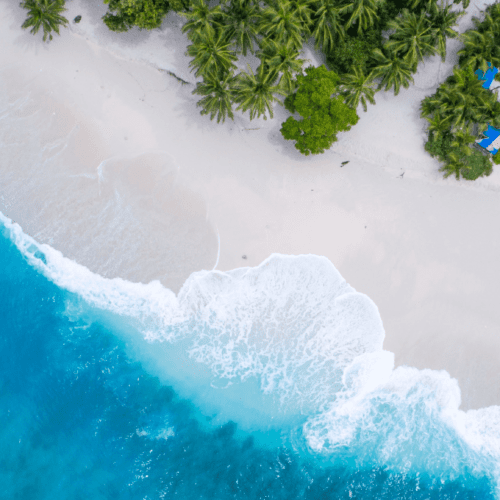Best Time to Visit North India – Complete Seasonal Guide for 2025
Table of Contents
Choosing the best time to visit North India is crucial for ensuring that you experience the region in its full glory. With such a diverse landscape, from the majestic Himalayas to the bustling cities of Delhi, North India offers something for every type of traveller. However the North India travel seasons vary greatly, and visiting at the wrong time can impact your experience. Whether you’re after vibrant festivals, exploring ancient monuments, or immersing yourself in the rich culture, it’s essential to plan your visit around the weather. For a personalized experience, consider booking luxury travel packages that cater to your specific travel needs.
In this comprehensive guide, we will help you understand the best time to visit North India by breaking down each season and highlighting the ideal time for North India tours based on what you want to see and do. From winter safaris in Rajasthan to trekking in the summer months in the Himalayas, this guide has everything you need to plan your perfect trip.
Overview of North India’s Climate:

North India’s weather is as varied as its landscapes. Depending on the region you visit, you can experience anything from scorching heat in the Thar Desert to snow-covered mountains in Ladakh. Generally, the best time to visit North India is between October and March when the weather is cooler and more suitable for sightseeing. During these months, the climate is ideal for outdoor activities, making it the ideal time for North India tours. If you’re looking for a luxury family holiday, this season offers a perfect blend of comfortable weather and engaging activities for all ages.
However, each season brings something different, and depending on your travel goals, you might find that Best time to visit India varies:
- Winter (October to March): Cool, pleasant weather, ideal for visiting the major tourist cities like Jaipur, Delhi, and Agra.
- Summer (April to June): Hot in the plains but perfect for visiting hill stations like Shimla, Manali, and Nainital.
- Monsoon (July to September): Lush landscapes, especially in the Himalayan regions, but comes with the risk of heavy rain in certain areas.
Winter (October to March) – The Best Time to Visit North India:

Winter is considered the best time to visit North India for most travellers. The weather is generally cool and dry, making it perfect for exploring the region’s rich history, culture, and natural beauty. During this season, temperatures hover between 10°C to 25°C in most of the plains, making it comfortable for outdoor activities like sightseeing and safaris.
Some of the best destinations to visit during this period include the famous Golden Triangle of Delhi, Agra, and Jaipur, where you can marvel at landmarks like the Taj Mahal, Qutub Minar, and Amber Fort. Additionally, this is the prime time for wildlife safaris in places like Ranthambore and Jim Corbett National Park, where you might spot tigers, leopards, and other exotic wildlife.
Why Winter is the Ideal Time for North India Tours:
- Pleasant Weather: Sightseeing is more enjoyable with comfortable temperatures.
- Festivals and Events: Winter hosts major festivals like Diwali and the Jaipur Literature Festival.
- Wildlife Safaris: Cool weather makes it perfect for spotting wildlife in national parks.
Winter is also the best time to visit North India for cultural immersion. You can enjoy the warmth of local hospitality while attending lively events and traditional celebrations, adding a unique touch to your journey.
Summer (April to June) – Ideal for Hill Stations:

If you’re wondering when to visit North India during the summer, the answer lies in its hill stations. While the plains experience extremely high temperatures (sometimes as high as 45°C in places like Delhi and Rajasthan), the cooler hill stations in states like Himachal Pradesh and Uttarakhand are perfect escapes from the heat.
Places like Shimla, Manali, and Mussoorie offer cool breezes, lush greenery, and stunning views of the mountains. Manali, in particular, is known for adventure activities such as paragliding and trekking, while Shimla boasts colonial charm and scenic walks. The weather in these hill stations during summer hovers between 15°C and 25°C, offering a pleasant escape from the scorching heat in the plains.
Top Summer Activities:
- Adventure Sports in Manali: From paragliding to white-water rafting, Manali is an adventure lover’s paradise.
- Trekking in Uttarakhand: Head to Nainital or Rishikesh for scenic treks and spiritual retreats.
- Explore Shimla: Known for its British-era architecture and beautiful landscapes, Shimla offers a refreshing break during summer.
Although summer in the plains can be intense, it’s also a time when certain festivals and events take place, such as the Holi Festival in March, which is celebrated with vibrant colours and festivities throughout the country.
Monsoon (July to September) – Lush Landscapes and Unique Experiences:

While the monsoon season might seem like an inconvenient time for travel due to unpredictable rainfall, it offers a unique experience for those seeking quiet retreats or wellness escapes. During the monsoon months (July to September), regions like Uttarakhand, Himachal Pradesh, and even Rajasthan come alive with lush greenery and serene beauty. The rain transforms the landscape, making it ideal for nature lovers.
Although travel during monsoon might come with challenges such as occasional road closures or landslides in the hilly areas, it’s an excellent time for those looking for a peaceful experience away from the usual crowds. The monsoon season is also the perfect time for Ayurvedic retreats, particularly in the Himalayan regions, where the rain and cool weather provide a serene environment for wellness therapies.
Why Monsoon is Still a Good Time to Visit North India:
- Fewer Tourists: Enjoy popular destinations without the usual tourist crowds.
- Lush Greenery: Witness North India’s landscapes at their most vibrant and green.
- Ayurvedic Retreats: The rainy season is considered the best time for rejuvenation and wellness in Ayurvedic traditions.
Regional Breakdown – When to Visit Popular Places in North India:
Each region in North India offers something unique, and the best time to visit North India varies depending on where you go:
- Rajasthan (October to March): The desert state of Rajasthan is best explored during the cool winter months when the temperatures are comfortable for outdoor exploration. Don’t miss the Palace of Winds in Jaipur or the tranquil lakes of Udaipur.
- Delhi and Agra (October to March): Both Delhi and Agra are perfect for winter visits. The mild temperatures allow you to explore iconic landmarks like the Red Fort, India Gate, and the world-famous Taj Mahal.
- Himachal Pradesh and Uttarakhand (April to June): The hill stations in these states are ideal for summer retreats. Manali, Shimla, and Nainital offer cool escapes from the heat, along with adventure sports, scenic views, and cultural experiences.
- Leh-Ladakh (May to September): For adventure enthusiasts, Leh-Ladakh in the far north is a dream destination during the summer months when the snow melts and the landscapes turn into a paradise for trekkers and bikers.
Essential Travel Tips for North India:
To make the most of your trip to North India, consider the following tips:
- Pack for the Season: In summer, pack light and breathable clothes, while in winter, layers are essential, especially in Rajasthan and Delhi.
- Stay Updated on Weather: If you’re travelling during monsoon, check the forecast regularly, especially if you’re heading to hilly regions.
- Book in Advance for Winter: Winter is peak season, so booking hotels and transportation in advance is highly recommended. To ensure a seamless booking process, explore custom holiday packages tailored for your travel dates.
Explore North India with QXP India:
Ready to discover the rich culture and beauty of North India? QXP India specializes in curated, luxury journeys that offer unparalleled experiences across the region. Whether you want to explore the palaces of Rajasthan, trek through the Himalayas, or enjoy an Ayurvedic retreat during monsoon, QXP India ensures a personalized, seamless travel experience. Start your adventure with QXP India and make the most of the best time to visit North India with expert-guided tours tailored just for you!
Frequently Asked Questions
The best time to visit North India is from October to March when the weather is pleasant and ideal for sightseeing.
Winter is considered the ideal time for North India tours, especially for popular destinations like Delhi, Agra, and Rajasthan.
Yes, summer is perfect for visiting hill stations like Shimla and Manali, which offer cooler weather.
Yes, although monsoon brings heavy rains, it’s a beautiful time to visit the countryside and enjoy Ayurvedic retreats.
October to March is the best time to visit Rajasthan, as the weather is cool and comfortable.
Pack warm layers, as temperatures can drop, especially during the nights in Rajasthan and Delhi.
Yes, major festivals like Diwali, Christmas, and the Jaipur Literature Festival take place during winter.
Monsoon can cause landslides in the Himalayan regions, so it’s important to check weather forecasts before travelling.
Puneet Khurana
Related Articles
Best Cities to Visit in India | Best Places to Travel in India | Best Time to Visit India | Cool Places in India | Family Holidays India | India Tourist Attractions | India Travel Guide | India Travel Tips | Is India Safe to Travel | Luxury Holidays in India | Places to Visit in India | Things to See in India | Top 5 Tourist Places in India | Tour and Travel in India | Travel Agencies in India | Luxury trains in India | Wellness retreats in India | Best time to visit North India | UNESCO World Heritage Sites in India | Luxury beach resorts in Goa | India photography tours | Offbeat destinations in India | Places to visit in the monsoon in India | Things to do in Kochi | Things to do in Agra | Best time to visit Andaman | Places to visit in Mysore | Best time to visit India Golden Triangle | Best road trips in India | Places to visit in Delhi













